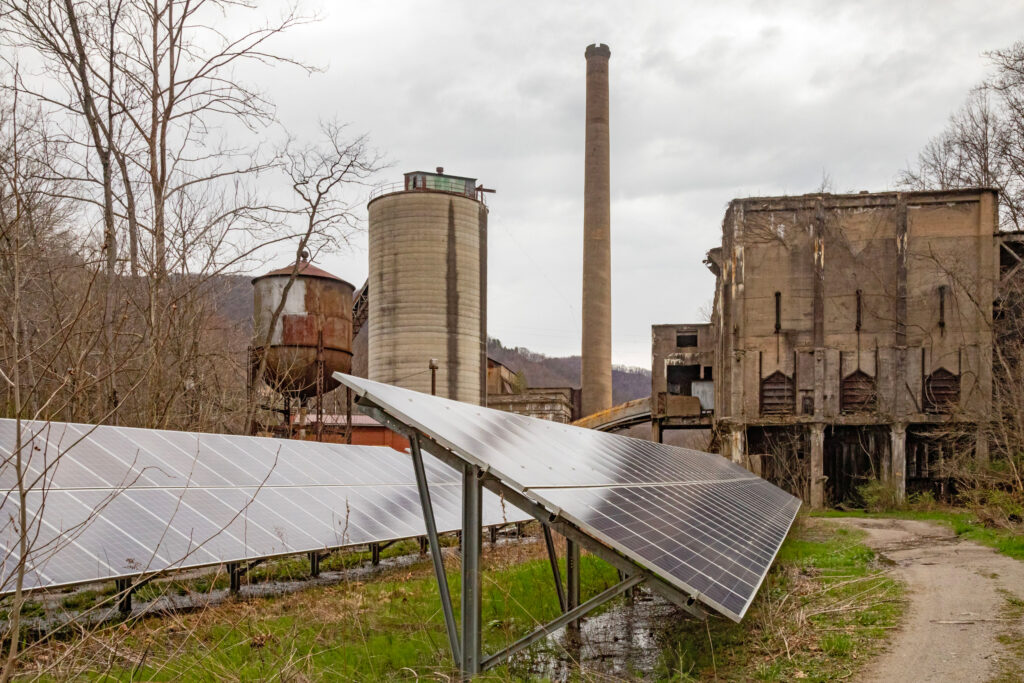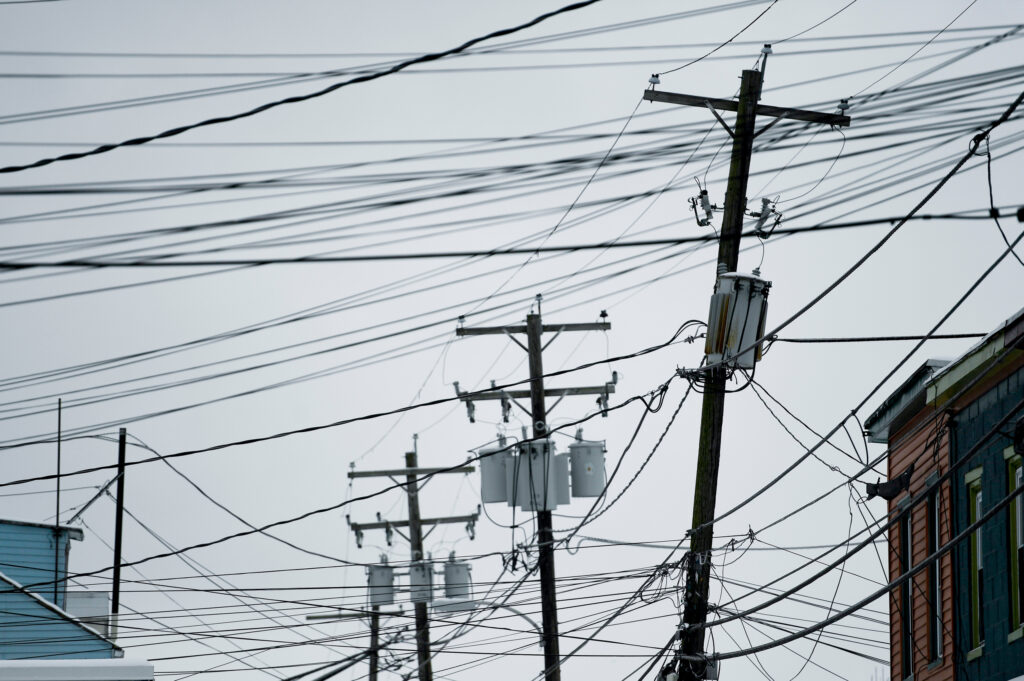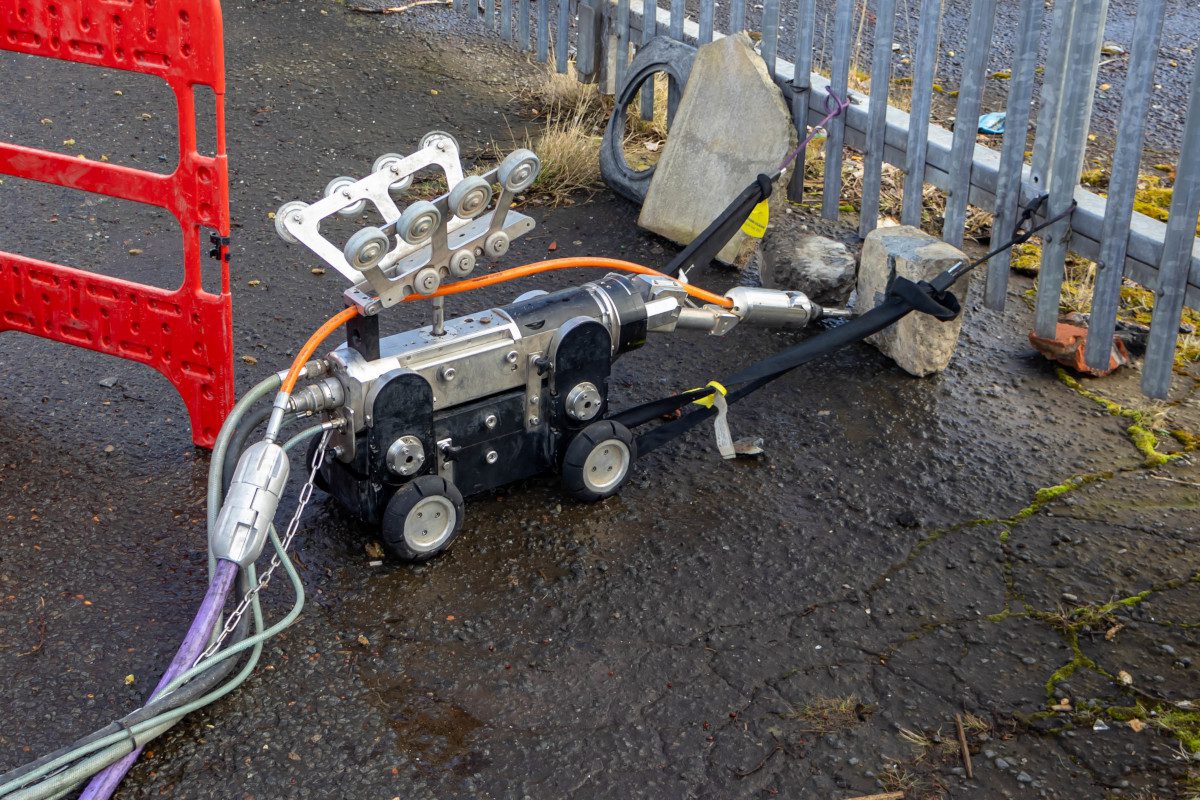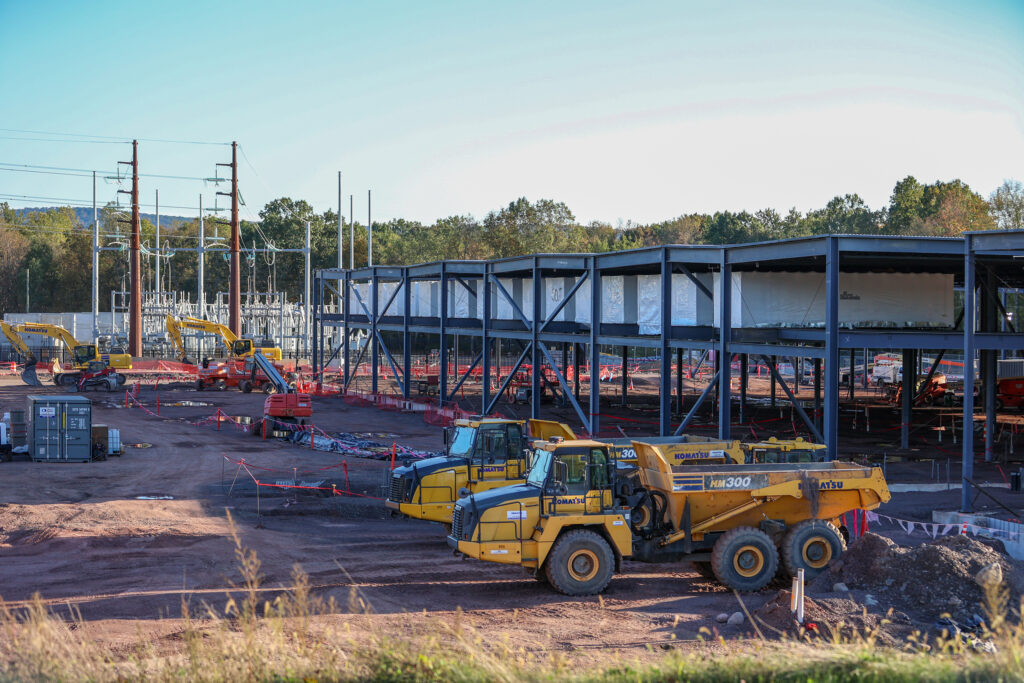Fracking wastewater, injected underground for permanent disposal, traveled 12 miles through geological faults before bursting to the surface through a previously plugged West Texas oil well in 2022, according to a new study from Southern Methodist University.
It’s the first study to draw specific links between wastewater injection and recent blowouts in the Permian Basin, the nation’s top producing oil field, where old oil wells have lately begun to spray salty water.
It raises concerns about the possibility of widespread groundwater contamination in West Texas and increases the urgency for oil producers to find alternative outlets for the millions of gallons of toxic wastewater that come from Permian Basin oil wells every day.
“We established a significant link between wastewater injection and oil well blowouts in the Permian Basin,” wrote the authors of the study, funded in part by NASA and published last month in the journal Geophysical Research Letters. The finding suggests “a potential for more blowouts in the near future,” it said.
For years, the Texas agency that regulates the oil and gas extraction industry has refrained from putting forth an explanation for the blowout phenomenon, even as a chorus of local landowners alleged that wastewater injections were driving the flows of gassy brine onto the surface of their properties since about 2022.
Explore the latest news about what’s at stake for the climate during this election season.
Injection disposal is currently the primary outlet for the tremendous amount of oilfield wastewater, also known as produced water, that flows from fracked oil wells in West Texas. Thousands of injection wells dot the Permian Basin, each reviewed and permitted by Texas’ oilfield regulator, the Texas Railroad Commission.
Oil producers are exploring alternatives—a small portion of produced water is reused in fracking, and Texas is in the process of permitting facilities that will treat produced water and release it into rivers and streams. Still, underground injection remains the cheapest and most popular method by far.
A scientific connection has solidified between the practice of injection disposal and the increasing strength and frequency of earthquakes nearby. In the Permian Basin, a steady crescendo of tremors peaked last November with magnitude 5.4 earthquake, the state’s strongest in 30 years, triggering heightened restrictions on injections in the area.
The link between injections and surface blowouts, however, has remained unconfirmed, despite widespread suspicions. The latest study marks a big step forward in scientific documentation.
“It just validates what we’ve been saying,” Sarah Stogner, an oil and gas attorney who ran an unsuccessful campaign for a seat on the Railroad Commission in 2022, said about the latest study.
For the last three years, Stogner has represented the Antina Cattle Ranch, where dozens of abandoned oil wells have been spraying back to life. Stogner persistently alleged that nearby wastewater injection was responsible. But she couldn’t prove it.


Now a scientific consensus is beginning to fall in behind her.
“Our work independently comes to this same conclusion in different areas [of the Permian Basin],” said Katie Smye, a geologist with the Center for Injection and Seismicity Research at the University of Texas at Austin, citing several upcoming papers she and her colleagues will release at major geoscience conferences in the coming year. “There is a link between injection and surface flows in some cases.”
In a study published December 2023, Smye and others reported “linear surface deformation features” in parts of the Permian Basin—the ground was swelling along channels that suggested pressure moving through underground faults. Some of those were ancient geological faults, Smye said; others appeared to be created by recent human activity. Many of them were growing, heaving and bulging, the research showed.
When that channel of underground pressure hits an old oil well that is broken or improperly plugged, it can shoot to the surface.
“This is reaching a critical point in the Permian Basin,” Smye said. “The scale of injection needs is increasing.”
About 15 million barrels, or 630 million gallons, of produced water are injected for disposal in the Permian Basin every day, Smye said.
A Railroad Commission spokesperson, Patty Ramon, said in a statement the agency is “talking to operators in the Crane County area regarding geology and other data they maintain, reviewing satellite imagery, and analyzing RRC records such as well plugging information.
“We will be continuing this type of analysis in our commitment to ensuring environmental protection,” Ramon said.
Blowout in 2022
The SMU study examined a January 2022 blowout in Crane County that gushed almost 15 million gallons of brine before it was capped, according to the paper. That would fill about 23 Olympic-sized swimming pools.
The study traced the cause of the blowout to a cluster of nine injection wells about 12 miles to the northeast. Researchers pulled publicly available data on injection volumes at those wells and found they lined up closely to surface swelling that preceded the blowout. Seven of the wells belong to Goodnight Midstream and two belong to Blackbeard Operating, according to Railroad Commission records.
A spokesperson for Blackbeard said the company “is committed to ensuring prudent operations” and “will continue to operate its assets in accordance with all applicable laws and in coordination with all applicable regulatory agencies.”
Goodnight did not respond to a query.
According to the paper, injection at those nine wells began in 2018 at a rate of about 362,000 gallons per day and doubled to 720,000 gallons per day in late 2019. In late 2020 it doubled again to 1.5 million gallons—two Olympic-sized swimming pools crammed underground everyday—which is when the ground near the blowout site began to inflate.
The study found that the volume injected matched the volume of the surface bulge 12 miles away.
“These observations suggest that this group of injection wells to the NW of the study area, injecting into the San Andres and Glorieta formations, is responsible for the surface deformation in the region,” the study said.
“Our findings highlight the need for stricter regulations on wastewater injection practices and proper management of abandoned wells.”
Those wells reached a depth between 4,300 and 3,300 feet. But the SMU study found that the source of the bulge in the earth was much shallower, between 2,300 and 1,600 feet underground.
“This suggests the leakage of wastewater from the San Andres or Glorieta formations to the shallow formations,” the study said.
The bottom of the Rustler Aquifer, the lowest usable source of groundwater in the Permian, sits between 800 and 1,000 feet underground. The SMU study did not examine the possibility of groundwater contamination.
“Our findings highlight the need for stricter regulations on wastewater injection practices and proper management of abandoned wells,” the study said.
Todd Staples, president of the Texas Oil and Gas Association, said the Railroad Commission “is taking appropriate action by thoroughly gathering and reviewing data to address the issues experienced in Crane County.”
He said the industry cooperates with the Railroad Commission by providing data to help analyze geological formations.
“In addition, the industry and academia continue to explore alternatives to wastewater injection through market-based water reuse and recycling as well as innovative pilot programs,” Staples said.
Damaged Land
West Texas ranchers who own land where contaminated water is seeping from underground are beginning to worry it will soon become uninhabitable.
Last February, saltwater flooded parts of Bill Wight’s ranch, about 50 miles southwest of Odessa. The lifelong rancher purchased the land in 2012, hoping to pass it on to his kids. He told The Texas Tribune he wasn’t sure how much of the ranch would survive the leaking wells.
When it was clear the flow of water threatened the property last December, he asked the Railroad Commission to seal the well the water had leaked from. It took the commission months and millions of dollars to plug the well.
His brother, Schuyler Wight, faces a similar predicament at his ranch roughly 60 miles to the west in Pecos County. He has asked the Railroad Commission for years to investigate the multiple abandoned leaking wells on his property. The liquid has eroded the equipment on the surface and killed the plants. After the water dried up, the ground was crusted white from salt.
“It’s what we’ve known all along,” Schuyler Wight said. “What we’re doing is not sustainable.”


Ashley Watt, owner of a ranch 50 miles east of Schuyler Wight’s ranch in Crane County, told the Texas Railroad Commission during a 2022 meeting that she believed excessive injection by nearby oil producers was causing the fluids to spray from abandoned oil wells on her property.
A Railroad Commission staff member said the agency asked operators to check for a source of the leak. The operators told the commission they did not find any. The Railroad Commission during the meeting also said they did not find a well in the agency’s database, and that the nearest injection wells were less than two miles away.
The agency instructed staff to prevent truckers from accessing those injection sites, telling operators to find others “until further notice.”
The wells continue to leak.
Laura Briggs, who also owns a ranch in Pecos County less than half a mile east of Schuyler Wight’s place, said she has seen five old wells start leaking water since 2015. The Railroad Commission plugged two of them, she said, but one began to leak through the seal again.
Briggs has repeatedly given testimony and submitted documentation to the Railroad Commission asking for help. Based on her experience, she believes the subterranean problems in West Texas are much more than what the Railroad Commission can handle.
This story is funded by readers like you.
Our nonprofit newsroom provides award-winning climate coverage free of charge and advertising. We rely on donations from readers like you to keep going. Please donate now to support our work.
Donate Now
“If I could do one thing differently, we would have gotten a mobile home so it was easier to get the hell out of here,” Briggs said. “If this [ranch] goes leaking, we just have to leave and nobody will buy the property, no insurance will cover it, you’re just done.”
Despite those problems, the Railroad Commission approved 400 new disposal wells in the Permian Basin alone in 2021, according to agency documents, and 480 in 2022.
Threats to Groundwater
The use of injection wells for disposal has expanded immensely with the practice of fracking, according to Dominic DiGiulio, a geoscientist who worked for 30 years at the U.S. Environmental Protection Agency. But DiGiulio said these wells are still regulated under rules from the 1970s and ’80s. Increasingly, he said, those rules appear insufficient.
“West Texas isn’t the only place where this is happening,” DiGiulio said. “Overpressurization of aquifers due to disposal of produced water is a problem.”
In 2022, DiGiulio conducted a review of Ohio’s wastewater injection program for the group Physicians, Scientists, and Engineers for Healthy Energy and found the same two problems there: Injected fluids were leaking from some formations meant to contain them, and excessive injections were causing other formations to become overpressurized.
There was one big difference with Texas. In November 2021, DiGiulio’s study said, Ohio had just 228 injection wells for wastewater disposal. Texas, meanwhile, had 13,585 in 2022, according to Railroad Commission documents.
The primary threat posed by produced water migrating from injection wells is groundwater contamination. If deep formations fail to contain the toxic waste injected into them, that waste could end up in shallow freshwater aquifers.
It could happen two ways, DiGiulio said. If the wastewater enters the inside of an old oil well through corroded holes in the casing, it can travel up the steel pipe to the surface, spilling and seeping into the ground. If the wastewater moves up the outside of an old oil well, through the cement that surrounds the steel pipe, it could already be flowing into the aquifer.
That would be bad news for West Texas, which depends almost entirely on groundwater for drinking and crop irrigation.
“Once groundwater contamination happens, it’s too expensive to remediate,” DiGiulio said. “So when it occurs, that’s basically it. You’ve ruined that resource.”
About This Story
Perhaps you noticed: This story, like all the news we publish, is free to read. That’s because Inside Climate News is a 501c3 nonprofit organization. We do not charge a subscription fee, lock our news behind a paywall, or clutter our website with ads. We make our news on climate and the environment freely available to you and anyone who wants it.
That’s not all. We also share our news for free with scores of other media organizations around the country. Many of them can’t afford to do environmental journalism of their own. We’ve built bureaus from coast to coast to report local stories, collaborate with local newsrooms and co-publish articles so that this vital work is shared as widely as possible.
Two of us launched ICN in 2007. Six years later we earned a Pulitzer Prize for National Reporting, and now we run the oldest and largest dedicated climate newsroom in the nation. We tell the story in all its complexity. We hold polluters accountable. We expose environmental injustice. We debunk misinformation. We scrutinize solutions and inspire action.
Donations from readers like you fund every aspect of what we do. If you don’t already, will you support our ongoing work, our reporting on the biggest crisis facing our planet, and help us reach even more readers in more places?
Please take a moment to make a tax-deductible donation. Every one of them makes a difference.
Thank you,



















